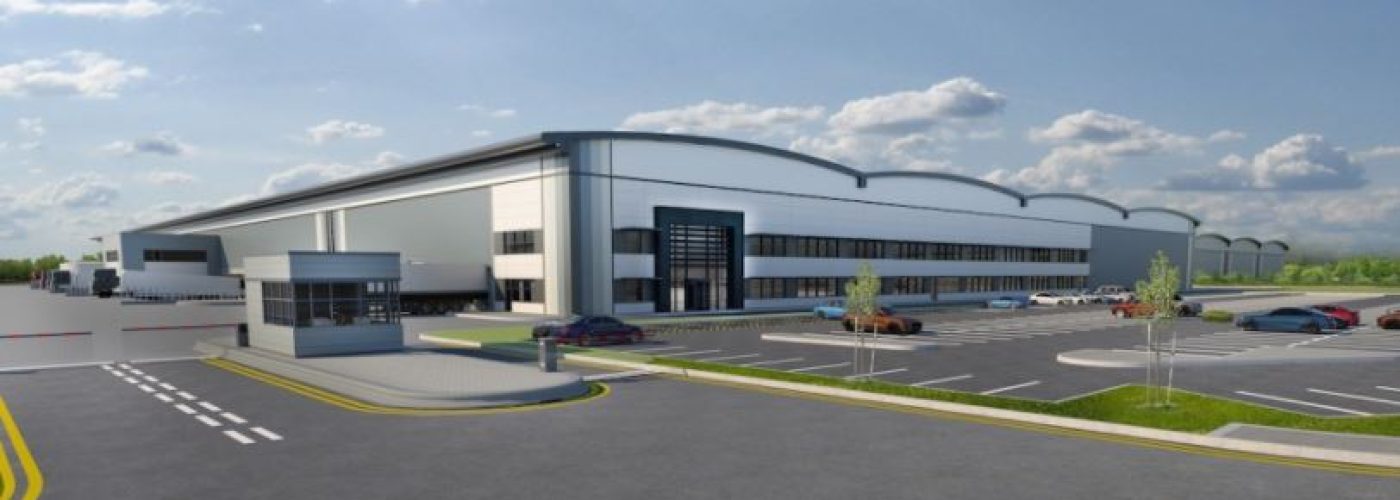The logistics sector across the Northern Powerhouse region has the potential to achieve transformational growth and create an additional 174,000 jobs by 2050 if key barriers are addressed, according to research by logistics developer Tritax Symmetry and planning and development consultancy Turley.
Areas identified as needing ‘substantial improvement’ to achieve the region’s growth potential include: supply of sites and premises, infrastructure investment and development, closing the North’s skills gap and delivering planning policy reform.
The Gross Value Added (GVA) of the logistics sector in the North of England is £15.3 bn a year and is estimated to rise to £20.9bn a year by 2039.
The research looked at numerous reports including the 2016 Northern Powerhouse Independent Economic Review which identified the potential growth of the logistics sector under a ‘transformational growth’ scenario. Under this scenario, the sector is identified as having the potential to achieve growth of 174,000 jobs (11%) and £29.6 billion GVA (8%) between 2015 and 2050. Split evenly by year, this equates to an average of 4,970 jobs and £845 million GVA growth per annum, resulting in an estimated annual salary increase of £5.3bn and a total additional 29,190 professional positions.
The ‘transformational’ scenario would require in the region of 130 million sq ft of floorspace across 3,000 ha of land. Based on existing ratios of warehouse floorspace to homes, the three regions of the Northern Powerhouse are currently under-delivering logistics floorspace in comparison to housing growth.
Commenting on the findings, Matt Claxton planning director at Tritax Symmetry said: “The potential for transformational growth is only achievable if the logistics sector is able to operate effectively and grow so we need to address these issues as a matter of priority.
“If these are resolved we have the potential to increase productivity and employment in the North, closing the prosperity gap between it and the rest of England. Logistics is an economic enabling sector, and if this growth is stymied or not supported, then the growth potential of other sectors will likewise be curtailed.”
David Diggle, director, planning at Turley continues: “Over the three years to 2018, 15,000 logistics jobs were created in the Northern Powerhouse which is already in line with the ‘transformational scenario’ outlined so it would certainly seem that the Northern Powerhouse is capable of achieving this potential but we need to tackle these areas to ensure we maximise the opportunity for growth.”
Speaking about the report’s recommendations Amy Gilham, director, economics at Turley said: “Based on our findings, we have made six key recommendations which will support growth in the logistics sector. The recommendations which include a holistic consideration of logistics space within urban centre development, the quick adoption of strategic spatial plans and ensuring appropriate and adequate allocation of sites for B8 uses, will enable transformational growth of the Northern Powerhouse. “
The Northern Powerhouse region is already home to 25% of the UK’s logistics businesses employing more than 263,000 people. With 12,350 warehouse properties (31% of all properties in England) totalling 538m sq ft (32% of all in England) it has seen an 80% business growth in the five years to 2019.
Some of the report’s key findings include:
Supply
While the North West has the second largest supply of large units of the UK’s regions, the five year average take up of grade A space indicates that there is just 1.45 years left of supply in this area. Speculative development has continued in the region for units over 100,000sqft though generally there is a limited development pipeline of larger units.
In Yorkshire and the North East, a record level of take up in 2018 has led to a decline in available supply. In South Yorkshire demand for medium-sized units has increased and activity for larger units has been driven by single transactions such as Amazon at Doncaster iPort. There is a shortage of supply of units under 20,000 sq ft and limited availability of mid-sized units.
In West Yorkshire there is supply of around 1.7m sq ft for units over 50,000 sq ft due to continued take up and limited speculative development.
The North East is seeing a decline in the supply of large units, particular Grade A, given limited development activity.
Skills
The logistics industry is made up of many different parts that perform very different functions, and this results in a variety of employment opportunities, both skilled and unskilled, on a full time and part time basis.
As the logistics sector becomes increasingly automated there is a need for a greater range of skills within the sector, including IT and engineering.
Some steps are already being taken to address the skills gap with developers, occupiers and further/higher education providers working together to develop logistics-specific curriculums as part of the delivery of large new logistics sites.
Logistics developers are also working closely with LPAs, local business groups, colleges and skills and training organisations to deliver Training and Employment Management Plans, in order to ensure jobs, training and work experience opportunities are realised for the local area for the lifetime of the development. Leaders of the Northern Powerhouse will need to continue to work with skills and training providers to ensure that the workforce’s skills are well matched to employer requirements.
Infrastructure
The northern ports are facing a number of challenges around finding suitable land for expansion of existing operations, particularly in relation to port access via road and rail.
Digital connectivity (high speed broadband) and power supply are commonly cited by logistics operators as barriers in seeking new sites and premises from which to operate.
Improvements to routes which join ports to national transport networks are also required. These include road and rail which at present can be slow and unreliable, further reducing competitiveness.
Dedicated air cargo services are currently limited which means that much of the air freight which arrives or departs from the North of England is moved by road. Introduction of dedicated cargo services, or a greater number of long haul passenger services, will help generate critical mass to enable a modal shift.
Planning policy
As logistics becomes increasingly urbanised there is a need to recognise this within planning policy. Consolidation of goods will be increasingly required as part of sustainability goals, which will include process solutions such as Click and Collect, and physical solutions such as urban consolidation centres, locker boxes and pick-up / drop-off parcel shops.
Ensuring planning processes are in place which understand and support these needs as part of delivery of urban development will be important. A supportive planning framework is also required for strategic rail freight provision as part of developing the multi-model freight infrastructure for the north.
Planning policies and decisions need to recognise the specific locational requirements of different sectors, including provision for storage and distribution operations at a variety of scales and in suitably accessible locations, when identifying strategic / employment allocations through emerging development plans. Options for additional locations should be considered, including as part of the Green Belt review process. This approach is in accordance with the NPPF and Planning Practice Guidance.
A full link to the Northern Powerhouse report.





